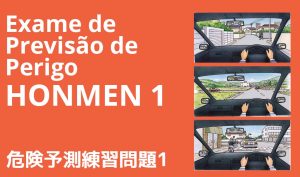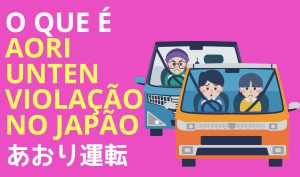(EN) Honmen English Exam Practice Test 1
(EN) 1 – 95 Honmen English practice written exam. Get at least 90 points to pass.
When an accident occurs, the driver should immediately stop the car and carry the injured off the road before treating them.
Do not move the injured person unnecessarily. Do not move the injured person, especially if head wounds are visible.
When the car begins to slip on snowy roads, apply the brakes quickly.
When you slip, don't apply the brakes. If skidding occurs, use the steering wheel to reorient the car.
Driving back to get your driver's license because you forgot it at home is not a violation.
You must always carry your driver's license at all times when driving.
If the speed is too fast on a left curve, the vehicle may overturn to the right side.
There is a risk of overturning to the right because centrifugal force works on the outside of the curve.
Cargo should not be loaded on the back of the truck as it is dangerous.
You may put things on the cargo bed, but not in such a way that they interfere with driving.
Hydroplaning is a phenomenon in which a tire suddenly bursts if the air pressure is low and the vehicle is driven at high speed.
It is a standing wave phenomenon.
The use of cell phones while driving is prohibited, but in-car navigation systems may be operated while driving.
Like cellular phones, car navigation systems are dangerous because operating them while driving can cause accidents.
Motorcycles with a total displacement of 125 cc are not allowed on highways.
The fan belt tension should be as tight as possible.
The fan belt is subject to strain, so it is best to press the center of the belt with your finger and allow it to deflect lightly.
No vehicles are allowed in the safety zone under any circumstances.
The road traffic law has principles and exceptions but no exceptions for safety zones and off-limits areas
The safe distance between vehicles on highways should be the distance between the speedometer numbers read in meters.
A speed of 100 km/h requires a distance of 100 meters, while a speed of 80 km/h requires a distance of 80 meters.
If you are forced to park on a motorway due to a breakdown, you must leave 0.75 meters of space from the edge of the road.
Unlike regular roads, there are no pedestrians, so there is no need to leave a space, and you must park on the left side of the road.
When parked, the parking space must be 3.5 meters, in which case it must be on the right side.
There should not be 3.5 meter room on the left side.
You could not put up a center stand on a two-wheeled vehicle, but you could push the motorcycle to do a figure eight and walk while pushing it, so you bought a large motorcycle.
The trick is to choose a motorcycle that suits your skill level and physique.
A major earthquake hit the area where my relatives live, so you drove there with food, water, and other relief supplies.
Fires and road damage are possible, so it is not suitable to move by car because there is a risk of secondary disasters.
Drivers are not required to report traffic accidents to police officers if they are minor in severity.
Whenever a traffic accident occurs, whether large or small, it must be reported to a police officer.
Do not drive at a speed exceeding the maximum speed or below the minimum speed on the main road of a national expressway.
On expressways, you must travel at no more than the minimum speed as well as not exceeding the maximum speed.
The smaller the radius of the curve, the greater the centrifugal force, which is proportional to the square of the speed.
As per the question. (If the speed doubles, it will quadruple; if it triples, it will increase 9 times)
The standing wave phenomenon is a condition in which a film of water forms between the tires and the road surface when driving at high speeds on a rainy day, preventing the brakes and steering wheel from working.
This is called hydroplaning.
When parking on a general road at night due to a breakdown, etc., if the road is illuminated and the driver of the vehicle advancing from 30 meters behind can be seen, it is not necessary to turn on the lights.
If there is street lighting and you can see that the vehicle is parked from 50 meters behind you, you do not have to turn on the lights.
Parking is prohibited near the top of hills and on steep slopes.
Stopping or parking near the top of a slope or on a steep slope is prohibited.
When the vehicle is fully loaded or when the vehicle is full, pay attention to the speed and the distance between vehicles and apply the brakes early.
When the vehicle weight is heavy or the speed is high, the inertial force is greater and the braking distance is longer, so the speed is reduced and the distance between vehicles is increased.
The maximum speed may be any number of kilometers unless a regulatory speed limit is set because the vehicle must travel at high speed on the highway.
On expressways, too, the legal speed limit is determined according to the type of vehicle, and drivers must follow it.
When an object is moving, or when an object is seen while moving, this is called dynamic vision, and vision is reduced compared to static vision.
When entering the main roadway from the acceleration lane on a highway, signal on the left to merge into the main roadway.
When entering the main roadway from the acceleration lane, a right signal must be given for a right turn.
When tire chains are attached to an RWD (rear wheel drive) vehicle, attach them to the rear tires.
Tire chains should be attached to the drive wheels, or to the front tires on front-wheel drive (FWD) vehicles.
Even if it is within 10 meters of the bus stop signboard, you can stop when the bus is not in operation.
Stopping and parking at the bus stop is prohibited only during operating hours.
Motorcycles may pass in the bus-only traffic zone when there are no buses coming.
No other vehicles, except for designated vehicles and small special motor vehicles, mopeds, and light vehicles, may pass in that traffic zone (with exceptions).
When the gas pedal grip is released while riding a motorcycle, the engine brake is applied, but the engine brake becomes weaker the lower the gear speed.
The lower the gear, the stronger the engine brake.
When parking an automatic car, turn off the engine, apply the hand brake, and put the selector lever in reverse range on level ground or downhill, and in low range on uphill.
Automatic cars should be in the parking range when parked regardless of location.
When an ordinary vehicle cannot be driven on a highway due to a breakdown or other reason, the driver must place stop sign equipment behind the vehicle or turn on emergency flashing lights, parking lights or tail lights when visibility is 200 meters or less, even during daylight hours.
On highways, emergency flashing lights and parking or tail lights must be installed along with stop sign equipment.
This is the left turn sign board.
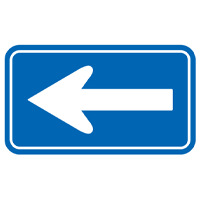
This is a one-way sign.
There are only two signs in this shape: slow and stop.
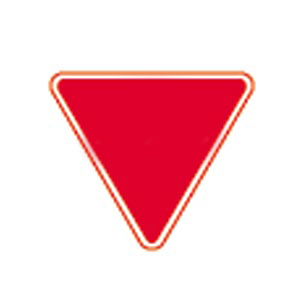
Depending on whether there is a priority road ahead, there are only two options: slow down and stop.
Only regular motor vehicle traffic is prohibited in the area marked by this sign.
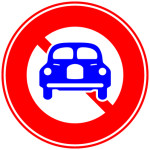
This sign allows two-wheeled vehicles (large two-wheeled vehicles, standard two-wheeled vehicles, etc.) to pass, but not other vehicles.
You saw this sign and sounded the car horn under this sign.
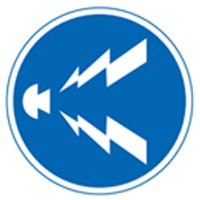
Since this sign is within the horn section, it must be sounded at intersections with poor visibility, bends with poor visibility, and tops of uphill slopes with poor visibility.
This sign indicates that there is merging traffic.
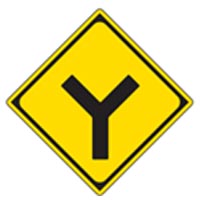
The sign in question is a sign indicating that there is a Y-shaped road intersection.
At places with this sign, vehicles heading in the direction of A can overtake on the right side, but vehicles heading in the direction of B are prohibited from overtaking on the right side.
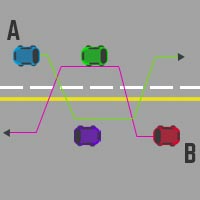
The car in direction A has a white dashed line on its left side and a yellow practice next to it, so it can extend to the right side to overtake, but the car in direction B has the opposite, so it is prohibited from extending to the right side to overtake.
This marker indicates the area where stopping is prohibited.
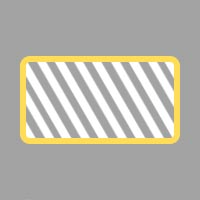
The markings in question are for the off-limits area.
Motorized bicycles may travel at a speed of 60 kilometers per hour on roads with this sign.
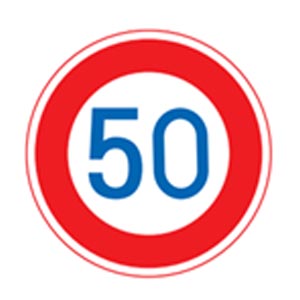
In this case, motorized bicycles must also not travel at speeds exceeding 50 kilometers per hour.
Do not overtake where this sign is present.
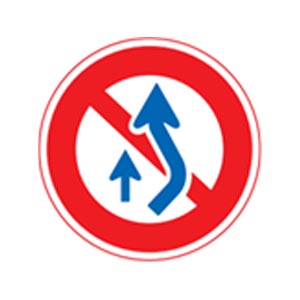
This sign prohibits passing on the right side of the road to overtake, or to extend beyond the center of the road to the right side for the purpose of overtaking.
This sign indicates the presence of a bicycle crossing zone or crosswalk.
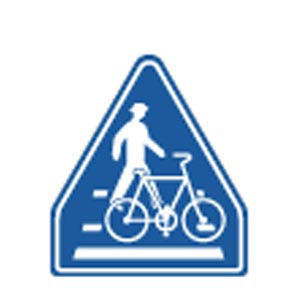
Indicates the presence of both a bicycle crossing zone and a pedestrian crossing.
It is easy to slip in places with this sign, so hold the handle firmly.
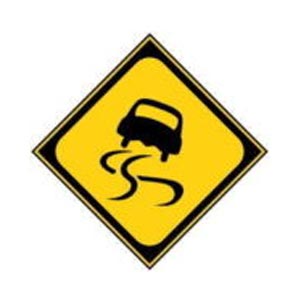
In areas where this sign is present, drivers should slow down in advance and be prepared for danger.
Traffic parallel to the front of the body of a police officer means the same as a blue light signal.
The front of the officer means when viewed from the front or back, and the parallel means when viewed from the side of the police officer.
When passing through a railroad crossing, drivers must stop just before the crossing (or just before the stop line if there is one), open a window, or otherwise check with their eyes and ears to ensure safety.
Safety checks must be made before entering a railroad crossing even if the signal in front is green.
When a person who has received a provisional license (karimenkyo) drives a large or standard-sized vehicle for practice, he or she must have a person with a second-class license of at least three years who can drive the vehicle beside him or her in the driver's seat and receive instruction from that person.
Driving history is irrelevant as long as the person has received a second driver's license.
A person who owns, uses, or manages an automobile (excluding two-wheeled motor vehicles) must secure a place to store the automobile within 2 kilometers of the address or other location where the automobile is used, other than on a road.
Vehicles that have not been secured for storage will be affixed with a No-Traffic Marker and the operation of the vehicle will be prohibited.
Since an earthquake occurred while you were driving, you had no choice but to park the car on the left side of the road, turn off the engine, close the windows, and evacuate with the engine key still in place without locking the doors.
The purpose of leaving the engine key on and not locking the doors is so that the vehicle can be moved in the event of an obstruction, such as an emergency vehicle. Also, closing the car windows is to prevent flames from entering the interior of the car in the event of a fire.
To check the coolant level of the radiator, start the engine, check the reservoir tank, or remove the radiator cap.
If it is done with the engine running, it will blow out because of the pressure. Do it without the engine running.
At intersections with this sign, going straight is prohibited.
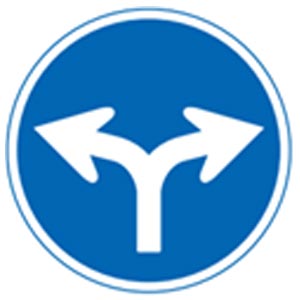
This sign indicates that you may not proceed in any direction other than the direction indicated. You may not proceed except in the direction indicated by the arrow.
Can you stop the car to drop off a friend at this sign?
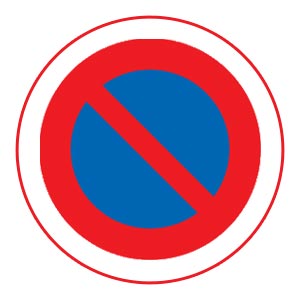
This sign is a no parking sign, but you can stop to drop people off.
When making a right or left turn, do not go through the traffic zone with arrows as shown in the figure.
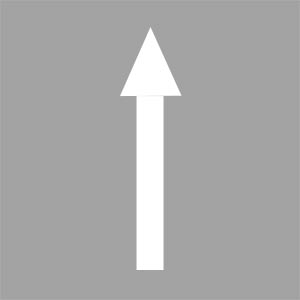
This marker allows only straight ahead; right and left turns are prohibited.
When a vehicle cannot be driven on a highway due to a breakdown or other reason, the driver must place stop sign equipment behind the vehicle or turn on emergency flashing lights, parking lights or tail lights when visibility is 200 meters or less, even during daylight hours.
In the case of highways, along with stop indicator equipment, you must also turn on emergency flashing lights, parking lights, or taillights.
When driving a car, do not zigzag or roll into other cars that may cause trouble to others drivers.
On roads marked with this sign, towing vehicles (trailers) must travel on the leftmost side of the vehicle lane.
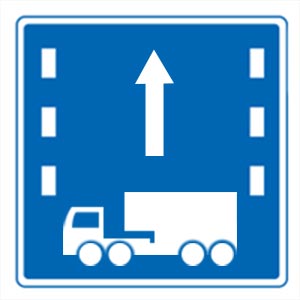
Do not overtake near the top of an uphill.
Overtaking is prohibited near the top of an uphill slope.
This sign does not allow motorcycles to pass, but allows mopeds to pass.
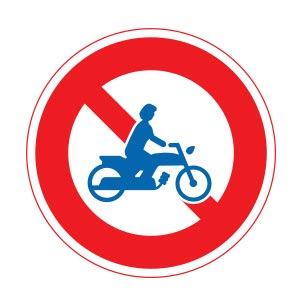
Neither large or ordinary motorcycles nor mopeds are allowed to pass with this sign.
There are four types of signs: guide signs, regulatory signs, auxiliary signs, and warning signs.
The four main signs are (Regulation, Instruction, Warning, Guidance) signs.
While driving a car, it is important not to focus on one spot, but to look around from a broader perspective.
By law, when approaching a vehicle that is slowing or stopped, it is not permitted to cut in front of it, but it is permitted to cross in front.
Do not cross in front of the car either.
Even on one-way roads, large motorcycles must ride on the left side of the road.
Illegal parking should not be done because it can lead to traffic accidents, cause traffic obstruction and lead to congestion, or block the passage of emergency vehicles.
While driving, the traffic light ahead was flashing red, so you paused at the stop line and proceeded slowly.
At a flashing red light, "pause" just before the intersection (stop line) to check for safety and proceed "slowly".
You can stop but not you cannot park where this sign is located.
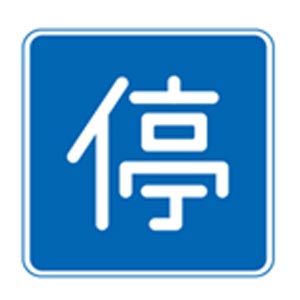
When pushing a two-wheeled vehicle on the sidewalk, you are treated as a pedestrian and you can push the motorcycle along the sidewalk with the engine running.
You are not considered a pedestrian when your engine is running. Turn the engine off when walking and pushing your motorcycle.
You cannot drive large motorcycles with large motor vehicle license
With a large motor vehicle license, you can drive Large motor vehicle, middle motor vehicle, semi-middle motor vehicle, regular motor vehicle, special light equipment and moped
When passing near a safety zone, one must slow down regardless of the presence or absence of pedestrians.
If there are no pedestrians, there is no need to slow down.
The priority lane with this sign must not be used by ordinary vehicles between 7:00 a.m. and 9:00 a.m., even if the traffic volume is light.
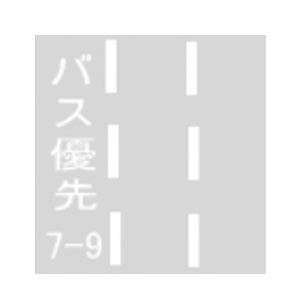
It is passable if it is possible to exit quickly when a bus or other vehicle approaches.
When driving near schools and kindergartens, one must always slow down.
There is no obligation to slow down. However, you must drive while paying special attention to the road.
If you are 21 years old or older, you can drive a large motor vehicle with a maximum payload of 7 tons (7,000 kg) immediately after obtaining a large motor license.
To qualify for the large-size license, in addition to age, you must have had a "large motor license" or "special heavy equipment license" for a total of at least two years.
When a car crashes, if its speed is halved just before the impact, the impact is reduced by a quarter.
Motorized bicycles can be driven without compulsory automobile liability insurance (Jibaiseki).
You must have a compulsory automobile liability insurance (Jibaiseki).
A small amount of water and oil leakage was found from the engine, but there was nothing unusual so you just continued to use the car.
Water or oil leakage from the engine is abnormal. Inspection and maintenance is required immediately.
This sign indicates the end of the section where the maximum speed is 50 kilometers per hour.
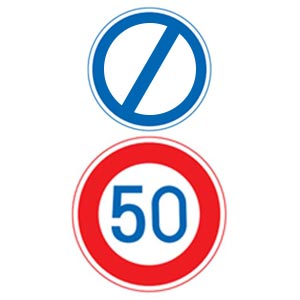
An emergency vehicle was approaching at the intersection so you quickly yielded the right of way in the intersection.
Yield the road by avoiding intersections.
If you are driving a car and intend to make a left turn, you must pull over to the left side of the road beforehand and slow down at the edge of the intersection.
When overtaking another vehicle, it is necessary to keep the side distance from the overtaking vehicle as narrow as possible to avoid a head-on collision with an oncoming vehicle in the opposite lane.
It is dangerous to close the side spacing when overtaking.
If it has been more than one year since you received your regular license, but less than one year since you received your motorcycle license, you are in the novice driver period for your regular motorcycle license.
The first year after each type of license is obtained is during the novice driver period.
Do not sound alarms near hospitals or schools.
It may be sounded if it is unavoidable to avoid danger.
On highways, the maximum speed for large buses on the main roadway is 80 kilometers per hour.
It is 100 kilometers per hour.
Unless otherwise specified by signs or markings, the maximum speed for motorized bicycles on public roads is 50 kilometers per hour.
The speed is 30 kilometers per hour. For cars, the speed is 60 kilometers per hour.
The height of luggage loaded on a motorized bicycle shall be within 2 meters from the loading platform.
It is within 2 meters "from the ground", not "from the carrier".
Where this sign is present, large passenger vehicles are not allowed to pass, but regular passenger vehicles with 10 or fewer occupants may pass.
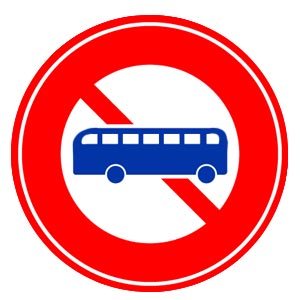
When driving at night, when passing an oncoming car, you must slow down because each other's lights may obscure the center of the road.
There is no obligation to slow down. However, it is difficult to see the center of the road, so please slow down and check for safety.
Do not pass a car driving with an elderly driver sign.
Overtaking and side passing are not prohibited.
This sign indicates that the road ahead is a dead end.
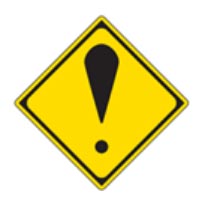
The sign in question indicates "danger ahead".
On a one-way street, an emergency vehicle was approaching and you were about to pull over to the left side of the road, but eventually decided it would be safer to pull over to the right so you yielded the right of way.
Parking is prohibited within 10 meters before and after the railroad crossing, but it is possible to stop for people to get on and off.
Do not stop even for people to get in and out of the car.
When parking a car on a flat road or downhill, leave the gear in reverse; for AT cars, leave the change lever in "P".
Only in the case of loading and unloading, stopping a car for more than 5 minutes is not parking but stopping.
If it exceeds 5 minutes, it will be treated as "parking".
While driving on the highway, you dropped the cargo (load) from your car, but it was relatively small and there were few cars passing by, so you left it as it was.
If a load falls, measures must be taken to prevent the following vehicle from being struck by the falling object.
If a car is stopped in front of a crosswalk, the driver must stop temporarily when moving forward through the side of the crosswalk.
In places where overtaking is prohibited, it is also forbidden to overtake light vehicles with an automobile.
It is possible to overtake light vehicles.
The faster the vehicle speed, the more fuel it consumes, but the slower the speed, the less fuel it consumes.
The slower the speed, the more fuel is consumed.
In hand signals made by police officers, "A" and "B" mean the same thing.
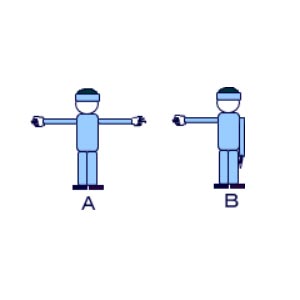
On long downhill slopes, excessive use of engine braking is dangerous as the brakes will not work.
While excessive use of the brake can be dangerous, excessive use of the engine brake will not cause the brake to fail. On long downhill slopes, the engine brake should be used to its fullest extent.
MORE PRACTICE EXAMS
JN8 -JAPANnavi8-
Site de informações apoiando estrangeiros que moram no Japão



